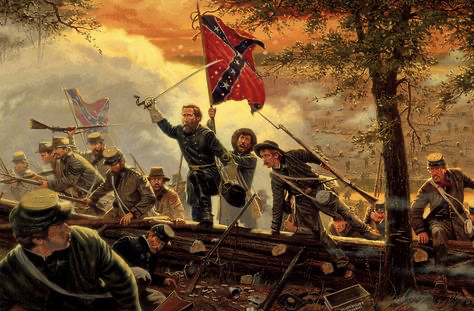
The Myth of Lincoln’s
Emancipation Proclamation
Be skeptical when a politician attempts to claim a moral high ground
January 1, 2023, marked the 160th anniversary of President Abraham Lincoln’s “Emancipation Proclamation” on January 1, 1863. Widely claimed to “free all slaves” by those promoting the Lincoln Myth, his proclamation did not free nearly a million slaves in the United States. Lincoln specifically exempted from freedom every slave in every place he had legal authority in.
Remember, the winners write the history books. The Lincoln Myth includes the myth that his proclamation lawfully ordered slaves to be set free. For other parts of the Lincoln Myth, see any American history textbook used in a government school American history class.
The often-misrepresented claim that the proclamation freed the slaves skips Lincoln’s exemptions of many 1863 slaves. Ignoring the exemptions is helpful for those willfully promoting the Lincoln Myth using the manipulative trick of omission. The myth is also promoted by many people out of lack of knowledge of history, Lincoln, and what is actually in the Emancipation Proclamation.
Lincoln’s edict contains the text we heard in our government schools and regularly see online, “all persons held as slaves…shall be then, thenceforward, and forever free.” What is usually skipped is the part between “held as slaves” and “thenceforward.” The actual text of Lincoln’s proclamation is below:
“all persons held as slaves within any State or designated part of a State, the people whereof shall then be in rebellion against the United States, shall be then, thenceforward, and forever free”
Lincoln’s use of the word “all” wasn’t about all slaves. It wasn’t actually about any slaves in any area Lincoln’s order had legal force in. The proclamation exempted about half a million slaves in the slave states that did not seceded from the United States – Missouri, Kentucky, Maryland, and Delaware. It exempted all the slaves in Washington D.C. It exempted the slaves in the western territories of the U.S.
The proclamation also exempted every slave in every part of the Confederate States of America (CSA) that the United States Army had forcefully taken control of. Anywhere the U.S. Army had attacked and occupied part of a southern state was exempted. It exempted New Orleans and a large part of Louisiana. It exempted much of Tennessee. It exempted the cites of Norfolk and Portsmouth, VA, along with the VA counties of “Berkley, Accomac, Northampton, Elizabeth City, York, Princess Ann, and Norfolk.”
The proclamation didn’t include the slaves that attacking Union forces within southern territory seized and put to work as slaves.
The proclamation issued in September exempted every slave in any state that would chose to rejoin the United States before January 1, 1863. To keep slavery legal and OK with President Lincoln by his proclamation, all that was necessary for a state to do was to leave the CSA and rejoin the United States.
The proclamation was first made publicly on September 22, 1862, just after the Battle of Antietam, when 23,000 men fell in a single day. Upon advice from the Secretary of State to Lincoln in July 1862, Lincoln had held off issuing the edict out of concern it would look like an “act of desperation.” Taking timely advantage of the victory and deaths in Antietam in September, five days after the battle Lincoln issued the “Preliminary Emancipation Proclamation” on 9/22/1862. The edict announced in September was to take effect on the first of January.
The key purpose of the September announcement for a January 1 start date and the exemptions of so many slaves was incentive to the southern states to rejoin the United States. By doing so the southern states could keep slavery legal by taking advantage of the Lincoln’s exemptions. The four month delay in taking effect provided incentive to areas not yet taken over by the Union Army to give up easily or not fight at all. The delay encouraged another large block of counties of any of the southern states to secede by splitting their state in two, forming a new state, and becoming a member of the United States as was done by West Virginia. Lincoln was 100% in support of secession – but only if it furthered his agenda.
All a southern state needed to do in fall of 1862 to keep its slaves and avoid massive death and widespread destruction at the hands of Lincoln and his Army was to rejoin the United States, taking advantage of Lincoln’s offer in the Emancipation Proclamation.

None of the states in the CSA took advantage of Lincoln’s four month delay and offer. Lincoln waited until January 1st, and then issued an announcement that the edict formally had taken effect. Hence the January 1st, 1863 deadline is the date typically attributed to Lincoln’s proclamation, even though nothing actually happened that day beyond Lincoln signing the updated edict after his September offer to the southern states was proven to be a failure.
If slavery was the reason Virginia had seceded and joined the CSA, the problem could have been resolved in one day by the VA legislature without bloodshed as far as Lincoln and his proclamation was concerned. If VA choose to go back to paying taxes to Washington D.C., Virginians could keep all their slaves.
You can keep all your slaves, no worries – just let the federal government have control of your money and your land
Loose translation of Lincoln’s Emancipation Proclamation
The U.S. Government’s Featured Documents webpage on the Proclamation notes it “did not end slavery in the nation, it captured the hearts and imagination of millions of Americans and fundamentally transformed the character of the war.” Setting aside the emotionally laden and impossible to verify capture of the “hearts and imagination of millions,” the factual part here is the transformation of the character of the war. The Proclamation is a reasonable mark of the war propaganda shift by Lincoln and the federal government, when the purpose of the war was transformed for political reasons into an effort to “free the slaves.”
The same government Featured Documents webpage notes the Proclamation “added moral force to the Union cause and strengthened the Union both militarily and politically.” This statement recognizes the addition of a so-called “moral force to the Union cause” made by Lincoln in the third year of the ongoing War for Southern Independence. It is an about-face in the publicly claimed purpose of the war, for both Lincoln and for the U.S. government. It did indeed strengthen the Union cause “politically.”
The Proclamation also likely strengthened the “Union cause” militarily, as claimed, by its announcement of the acceptance of black men into the Union Army and Navy. The total by the end of the war on the United States side according to the same government webpage was “almost 200,000 black soldiers and sailors.” I will set aside for now consideration on why Lincoln was three years into his invasion war before he formally allowed black men to participate as freemen fighting with the Union forces.
The Emancipation Proclamation should be recognized for what it was – a political stunt with an offer to any southern state to keep all their slaves and simultaneously avoid massive death and widespread destruction at the hands of Lincoln’s army. Paying taxes to Washington DC would have solved the problem. An offer that no southern state took advantage of.
Be skeptical when a politician attempts to claim a moral high ground. History shows it is likely a trick shrouded in a lie. Watch for veiled political stunts. Lincoln’s Emancipation Proclamation political stunt was no exception.
